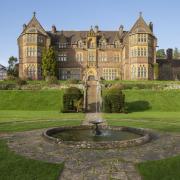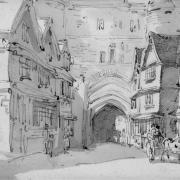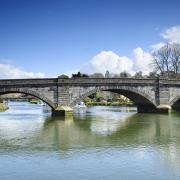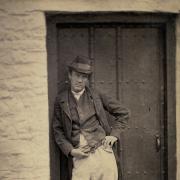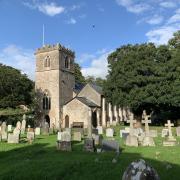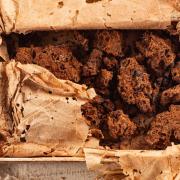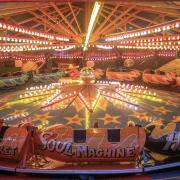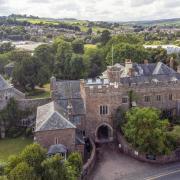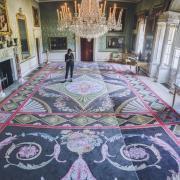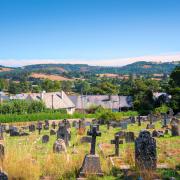Chris Hallam takes a look at the long history of ‘The Bloody Eleventh,’ otherwise known as the Devonshire Regiment.
For almost three centuries, they seemed to be an almost essential ingredient of any battle Britain found itself involved in. Whether it was a case of battling the deposed rebel King James II at the Boyne in the 17th century, braving the bombardment of Napoleon’s cannons in the 19th or withstanding the terrible carnage of the Somme during the First World War, the brave warriors of the Devonshire Regiment could always be relied upon.
The identities of the men doing the fighting changed over the years as did the uniforms and weaponry involved, the black pointy hats, colourful uniforms and muskets of the 18th century eventually giving way to the khaki and machine guns of the 20th century’s World Wars. But the principles of duty, honour and bravery of the Devonshire Regiment remained fundamentally unchanged.
THE BEAUFORT MUSKETEERS
The Devonshire Regiment was active between 1685 and 1958.
Like the city of Exeter, the Regiment boasted the motto, ‘Semper Fidelis’ (“Ever Faithful”) although, in truth, their full history actually includes a rare case of the men switching sides early on. It was in 1685, that Henry Somerset, The Duke of Beaufort raised what was then called The Duke of Beaufort's Regiment of Foot to defend Bristol from the Duke of Monmouth’s rebellion against the unpopular Catholic King James II. Some called them the ‘Beaufort Musketeers’ although in fact, they did not see action this time and Monmouth’s rebellion failed when he was defeated at the Battle of Sedgemoor.

But three years later, James II fled the country as the ‘Glorious Revolution’, led by an invading Dutch force headed by the Protestant William of Orange and his wife, Mary (James’s daughter), swept in and took the English throne in his stead. It was a fast-changing situation (Britain was still essentially at war with itself) so by this time, the Regiment was behind William and Mary and now firmly against James. The Regiment first saw action fighting for William against the French and Irish forces who were backing the deposed James II in Ireland at the Battle of the Boyne (1690) and the siege of Limerick (1691).
They would not officially be known as the Devonshire Regiment until July 1881. But a long and distinguished career on the battlefield which would endure for several centuries had begun.
THE BLOODY ELEVENTH
The Regiment fought boldly in many theatres of conflict throughout the 18th and 19th centuries. They were not always successful. They had to be reformed after being captured at Portalegre in Portugal in 1704 while fighting alongside John Churchill, the Duke of Marlborough, in the War of the Spanish Succession. They helped defeat the first Jacobite Rebellion in 1715 and fought in Europe during the 1740s War of the Austrian Succession and in the 1756-63 Seven Years War in Germany. By now, (in 1751), the Regiment had been assigned the number 11 in the infantry order of precedence. In 1756, they formed a 2nd Battalion which in time became a separate unit, the 64th Regiment of Foot.

During the Napoleonic Wars, in which the Regiment were very active, the 1st Battalion adopted the regimental march of ‘We’ve lived and loved together.’ They also earned the nickname ‘The Bloody Eleventh’ after the fiercely fought Battle of Salamanca in 1812.

The Regiment reverted to single battalion status in 1816 although a second Battalion was again established in 1858. They remained active throughout the Victorian era and in 1881, were formally made the County Regiment for Devonshire and were assigned the county’s militia units. They also adopted the cap badge of the castle of Exeter.


20TH CENTURY
The Regiment enjoyed mixed fortunes over the years. During the Second Boer War (1899-1902), they suffered defeat at Spion Kop, a military calamity overseen by Devon’s own General Revers Buller. At Ladysmith, however, Lt. Masterson gained the regiment’s first Victoria Cross. It was at Ladysmith to that a young Indian served as a stretcher bearer for the regiment. His name was Mahatma K. Gandhi, the future architect of Indian independence.

By the time the First World War broke out in 1914, what was now definitely known as the Devonshire Regiment was expanded to 25 Battalions. Inevitably many of the recruits were now from outside Devon. A second Victoria Cross was won by Private Veale at the Somme while a Lance Corporal Onions won a third in 1918.


The Second World War saw eleven battalions raised. The Devons took part in their first amphibious landing in Sicily. Forces were engaged in heavy fighting in Normandy, Burma and Malta. By now, the Regiment which had originally faced attacks from muskets and cannon was now facing tanks, machine guns and aerial bombardment. Centuries had passed and warfare had moved forward.

By the late 1950s, however, the Devons finally encountered an enemy who they could not fight. Attitudes were changing. National Service was abolished as Britain’s role in the world was reassessed. In 1958, it was decided to merge Devon’s County infantry Regiment with the Dorsetshire Regiment, who they had often fought alongside many times in the past. It was the end of an era. But regardless of whether they were known as Beaufort’s Musketeers or The Bloody Eleventh, the long and distinguished legacy of the Devonshire Regiment would never be forgotten.






